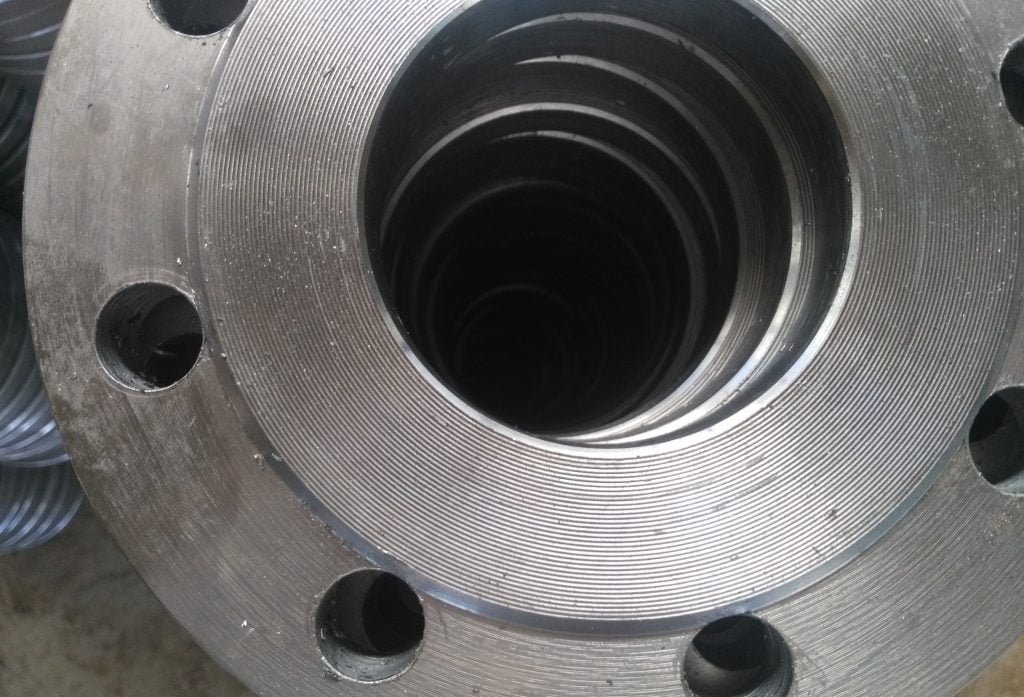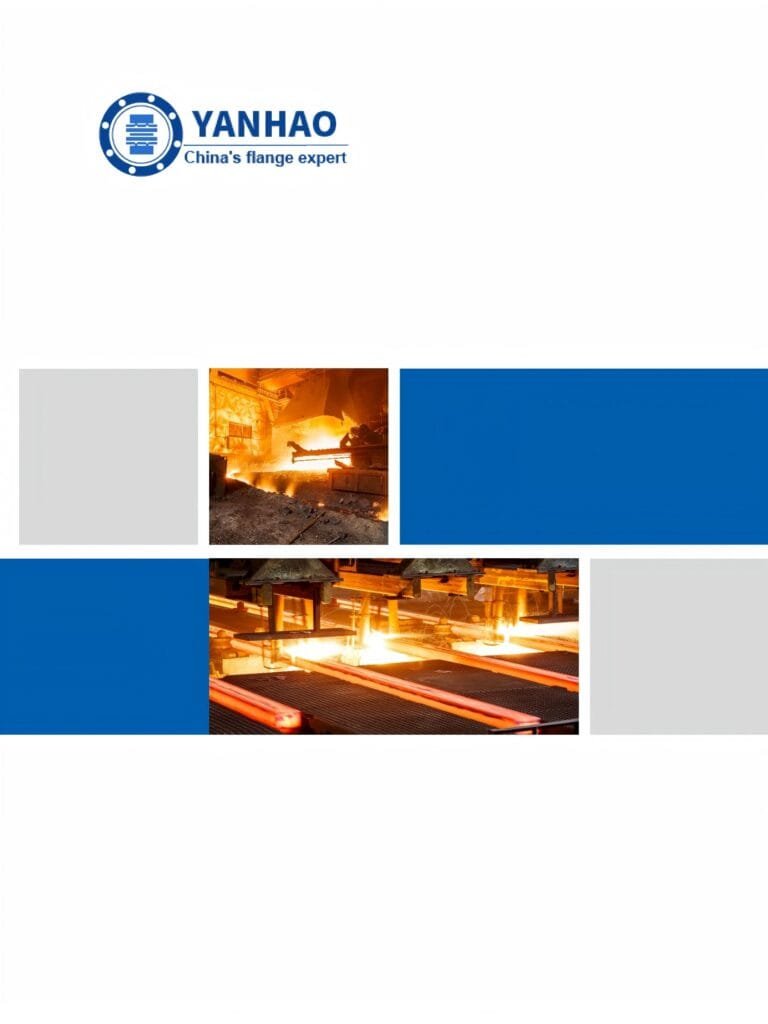How do you find the outside diameter of a flange?
I. Introduction
Flanges play a crucial role in connecting pipes, valves, and other components in various industries such as oil and gas, petrochemical, power generation, and more. They provide a secure and leak-proof connection, ensuring the smooth flow of fluids or gases.
The outside diameter of a flange is a critical measurement that determines its compatibility and functionality. It refers to the distance across the widest part of the flange, and accurate measurement is essential for seamless integration with other components. A precise outside diameter ensures proper alignment, and efficient flow, and prevents leaks or accidents in industrial processes.

At “YANHAO,” we are industry-leading experts in flange manufacturing and have extensive expertise in measurements. With years of experience, we understand the significance of determining the outside diameter accurately. Our commitment to quality and precision makes us the trusted choice for flange solutions in a wide range of industries.
In the following sections, we will delve into the importance of outside diameter measurement, methods to find accurate measurements, factors affecting outside diameter, ensuring accuracy and quality, and the advantages of choosing YANHAO as your reliable flange partner.
II. Understanding Flange Measurements
Flange measurements involve several key parameters, including inside diameter (ID), outside diameter (OD), bolt circle diameter (BCD), thickness, and bolt hole size. The inside diameter refers to the opening or bore of the flange, while the outside diameter is the measurement across the widest part of the flange. These measurements are crucial for determining the size and compatibility of the flange with other components
The outside diameter plays a critical role in ensuring the compatibility and functionality of flanges. It determines the size of the flange and how it can be integrated into the overall system. An accurate outside diameter measurement ensures proper alignment and fits with pipes, valves, and other components, preventing leakage and ensuring efficient fluid or gas flow.
Industry standards and specifications govern flange measurements to ensure uniformity and interoperability. Common standards include ASME/ANSI B16.5 for pipe flanges and flanged fittings, ASME B16.47 for large-diameter flanges, and ISO 7005 for flanges under pressure class designations. These standards provide guidelines for dimensions and tolerances to ensure compatibility and interchangeability between flanges from different manufacturers. Adhering to these standards is crucial in industries where safety, reliability, and efficiency are paramount.
III. Methods to Find the Outside Diameter
A. Several measurement techniques can be employed to accurately determine the outside diameter of a flange. These include using calipers, tape measures, or rulers. Calipers are precise tools that allow for accurate measurements by directly measuring the distance across the widest part of the flange. Tape measures or rulers can also be used by carefully aligning them and reading the measurement at the outer edge of the flange.
B. Engineering drawings and blueprints are valuable resources for determining flange dimensions, including the outside diameter. These documents provide detailed specifications and measurements that can be referred to for accurate determination. By carefully analyzing the drawings and blueprints, one can identify the required measurements and verify the outside diameter.
C. Advanced measurement devices such as laser scanners or coordinate measuring machines (CMM) offer enhanced accuracy and efficiency in determining the outside diameter of a flange. Laser scanners capture precise 3D measurements, allowing for accurate determination of the outside diameter. CMMs use touch probes and computer-aided software to measure various dimensions of the flange, including the outside diameter. These advanced devices provide highly accurate measurements and are especially useful for complex or large-scale flanges.
IV. Factors Affecting the Outside Diameter
A. Material expansion and contraction can significantly impact the dimensions of a flange, including the outside diameter. Different materials have varying thermal expansion coefficients, causing them to expand or contract with changes in temperature. It is crucial to consider these factors during the design and measurement processes to ensure that the flange dimensions, including the outside diameter, are accurate and appropriate for the operating conditions.
B. Manufacturing tolerances play a vital role in determining the outside diameter of a flange. Tolerances are predetermined acceptable variations in dimensions that are allowed during the manufacturing process. These tolerances can affect the final measurements of the flange, including the outside diameter. It is essential to understand and adhere to specific tolerances specified in industry standards or project requirements to maintain the desired accuracy and functionality of the flange.
C. Environmental factors, such as temperature and pressure, can also impact flange sizing, including the outside diameter. Flanges are often subjected to extreme conditions in various industries. Changes in temperature and pressure can cause expansion or contraction of the flange, leading to dimensional changes. Proper consideration of these environmental factors is crucial to ensure accurate sizing and compatibility of the flange in its intended operating environment. Adjustments may need to be made to the outside diameter measurements based on the expected environmental conditions.
V. Ensuring Accuracy and Quality
Precise measurements are crucial for the seamless integration of flanges with other components. Accurate outside diameter measurements ensure proper alignment, fit, and functionality of the flange within the system. Any discrepancies in the measurements can lead to leaks, inefficiencies, or even system failures. Therefore, precision in measuring the outside diameter is essential to ensure smooth operation and optimal performance.
Quality control processes play a vital role in verifying the outside diameter of flanges. These processes involve rigorous inspections, measurements, and checks to ensure that the final product meets the required specifications. Dimensional checks, using precise measurement tools, are performed to verify the accuracy of the outside diameter. Quality control also includes material analysis, visual inspections, and additional tests to ensure the overall quality and reliability of the flange.
Our company is committed to producing flanges with accurate outside diameter measurements. We prioritize precision and quality in our manufacturing processes. We adhere to industry standards and specifications, and our production facilities are equipped with advanced measurement devices and quality control procedures. Our team of skilled professionals conducts thorough inspections and checks to ensure that the outside diameter and other dimensions of our flanges meet the highest standards of accuracy. We are dedicated to providing our customers with flanges that guarantee reliable performance and seamless integration within their systems.
VI. Conclusion
In this blog post, we discussed various methods to find the outside diameter of flanges, including measurement techniques, engineering drawings, and advanced measurement devices. We also explored the factors that can affect the outside diameter, such as material expansion, manufacturing tolerances, and environmental factors. Ensuring accuracy and quality is vital, and we highlighted the importance of precise measurements, the role of quality control processes, and our company’s commitment to producing flanges with accurate outside diameter measurements.
If you have flange requirements, we encourage you to contact YANHAO. Our expertise in flange manufacturing ensures that your needs will be met with reliable and high-quality products. Whether you need standard-sized flanges or custom-designed solutions, we have the capabilities to deliver according to your specifications. Contact us today to discuss your flange requirements and experience our exceptional products and services.
As an industry-leading flange manufacturer, YANHAO has established a reputation for expertise, authoritativeness, and trustworthiness. We have the knowledge, experience, and advanced manufacturing facilities to provide you with premium flanges that meet your exact specifications. You can rely on us for accurate measurements, excellent quality control, and reliable performance. Contact YANHAO today to partner with a trusted and reputable flange manufacturer.
Author: Lewis Liu
Hello, my name is Lewis Liu, and I’m a professional sales engineer with over a decade of expertise in the flange fittings sector.
I am quite informed about flange selection, installation, and maintenance. I am passionate about providing customers with the greatest solutions for keeping their pipeline systems running smoothly, safely, and dependably.
If you have any queries or concerns concerning flange fittings for your pipelines, whether they are about selection, material choice, specification requirements, or anything else, please contact me at any time. I am dedicated to providing expert advice and assistance to help you make educated decisions and reach your objectives.

